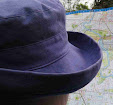Available from libraries and bookstores.
At the end of the Great War the Department of Defence was faced with the problem of repatriating tens of thousands of men from various theatres of war home to Australia. Approximately 95,000 men were in France, 6,000 were in hospitals, convalescing, in reinforcement depots or working on the staff in the United Kingdom, and 30,000 were in the Middle East or other theatres of war.
With insufficient shipping to achieve their repatriation within the "duration of the war plus four months" stipulated when they enlisted, a huge effort was needed to keep the waiting troops occupied and entertained. One program was for sporting competitions between sportsmen of the allied armies, included such sports as shooting, boxing, athletics, football, and rowing.
Major Middleton, who was putting together personalities, programs, locations, and events, in various sports had been a successful rower himself. He put out a call for men experienced in rowing to come forward and try out for the AIF crew. He also sent out cables to rowers he knew to be in France or England and asked them to come. Whether Lieutenant Harold Newall received a personal invitation from Middleton, or responded to a notice in a newspaper, Newall turned up to tryout and was placed in the stroke seat of the AIF 2 crew, with Albert Dresser being in the stroke seat of AIF 1 crew.
The AIF crew was more democratic that the crews of other countries. England relied on officers only, who had attended public schools before the war. Class distinctions still counted in England. The USA crew likewise filled their crews with officers and men who had been to Ivy League schools. Australia put men of any rank in their boats, as long as they rowed well.
A large number of the Australians selected had represented Australia in their pre-war careers, several having rowed in the 1912 Olympics, for instance. Unlike these men, Newall before the war had rowed only as a club rower in Melbourne, for the Essendon Rowing Club. This club in itself was and is a democratic club, not relying on the public schools of Melbourne to crew their boats, but taking all comers.
In his 1914 season Newall had distinguished himself as the Men's Senior Eight stroke, and in his last row for 1914, his team-mates lifted him to their shoulders and chaired him onto the shore on the Yarra. Early in 1915 again, Newell won races for his club with his superior skills as the stroke, but it was the news of the severe losses at Gallipoli of which the Australian public only learnt in May 1915 that had 6 of 9 of the Essendon crew members join the AIF.
Patterson provides a detailed and interesting account of the vicissitudes of the training of the Australian crew prior to the Peace Regatta of 1919. Some had suffered severely at Pozieres, and probably all had a degree of PTSD. Major Middleton somehow got these two crews to pull together in the boats, selecting himself to balance out the crew that eventually won the Regatta for the AIF. It was unfortunate that the AIF 2 crew were selected to row against the AIF 1 crew in the first heat, and was thus eliminated from the Regatta early.
The Australian team cheerfully seized the King's Cup from the British rowing authorities who had been very reluctant even to allow overseas crews to compete, because heaven knows the Australians were not gentlemen. So the King's Cup came to Australia, and even then there was a controversy over it. The Australian War Museum seized it as a trophy of war. The Rowing authorities argued that it was not a war trophy and they petitioned King George V to allow them to keep the trophy as an annual perpetual trophy for the men's annual eight-oared competition. King George graciously agreed to the rowers' request, much to the chagrin of the AWM and others who were appalled at the effrontery of the rowers to go over the heads of the Australian government to petition the King. (See, I said they weren't gentlemen.)
This book is a jolly good read, and I recommend it strongly to anyone with an interest in sports of any kind, rowing in particular, and the history of the AIF. Scott Patterson is an excellent story-teller, and is also a film maker. His documentary film project on the AIF rowing team is nearing completion, and you can read about it at the above link.




















